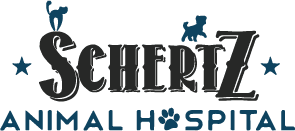 If you look in most pet cupboards or pantries, you will like find an array of tasty treats or, perhaps, an assortment of people food earmarked for the family dog in the fridge. It’s understandable that we want the best for our pets, but the ‘best’ may be hindering our pet’s health and creating a pet obesity epidemic.
If you look in most pet cupboards or pantries, you will like find an array of tasty treats or, perhaps, an assortment of people food earmarked for the family dog in the fridge. It’s understandable that we want the best for our pets, but the ‘best’ may be hindering our pet’s health and creating a pet obesity epidemic.
Is my Pet Obese?
Despite our general associate with “cuteness = plumpness”, many pet owners are beginning to ponder whether their pets may have put on too many pounds. And, unlike us, a few pounds for a dog or cat can amount to a significant percentage increase in weight. Sometimes we don’t notice the problem until our pets have eclipsed the overweight definition and have moved into obesity.
If you are wondering if your pet is too hefty for his or her health, here are some visual guides to help sort out the matter of size.
Curves to bulges – Looking at your cat or dog from above, you should notice a gentle curve inward around the waist, creating the appearance of a waistline. From a side view, there should be a slope upward from the rib cage to the pelvis.
Presence of ribs – Gently press around your pet’s ribcage. You should feel the ribs easily without too much cushioning.
Tires easily – Have you noticed that you’re the only enthusiastic one on your dog’s walk? Is he or she having trouble keeping pace?
Treat determined – If your pet is more motivated by food than anything else, you may have an overweight pet on your hands (or soon to be, if indulged).
Pet Obesity: What’s the Big Deal?
Overweight and obese pets can be impacted by a wide range of physical challenges. Pet obesity has been linked to:
The list can continue to grow, but the overall message is that overweight and obese pets are at greater risk of diseases and reduced quality of life.
What Can I Do?
The first place to start is at your pet’s wellness examination where you will be given the appropriate weight range for your pet, prescription diet (when needed), and consultation on ways you can help keep your pet fit and healthy through safe weight loss.
If you have been lax in the dog walk department or have not been engaging your cat in those “catch the mouse” games, consider adding at least 30 minutes daily to focus on getting your pet moving. This could be done through walking, jogging, games, or other interactive and high energy activities.
And, last but not least, many pets become overweight when they are given larger than recommended meal portions, one too many treats, and people food. While we want our pets to know how much we love them, there are many activities you can share with your pet that do not put him or her at risk for weight gain. Include the whole family in your pet’s weight management and keep a food chart for your pet to avoid unintentional doubling up on meals or treats.
For a nutritional consultation and wellness exam, please call to schedule an appointment.
Recent Posts
About Us
We know that choosing the right veterinarian for your pet (and you) can be a challenge. Yet, with our stress-free handling, our long-term, experienced staff, and a state-of-the-art facility, we make the decision an easy one!
